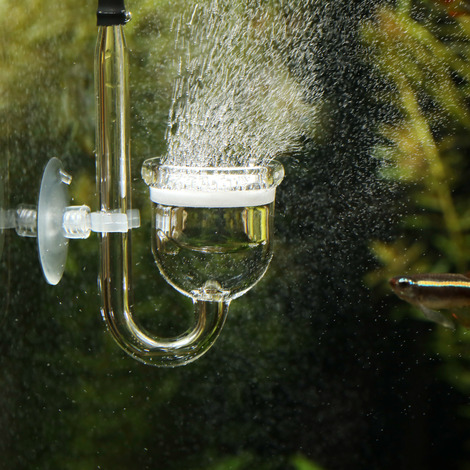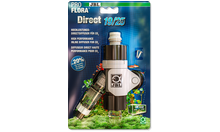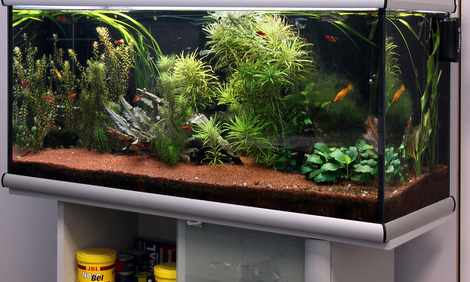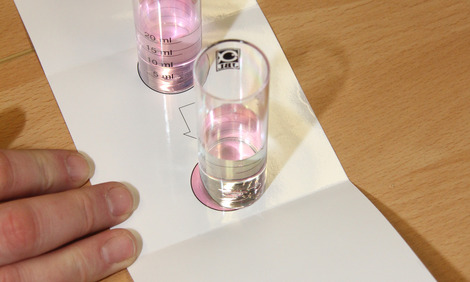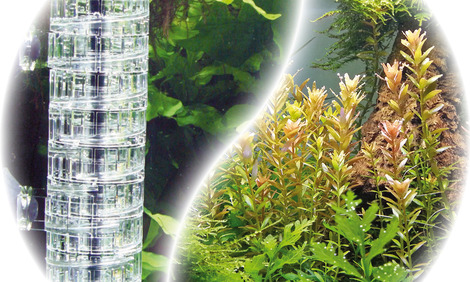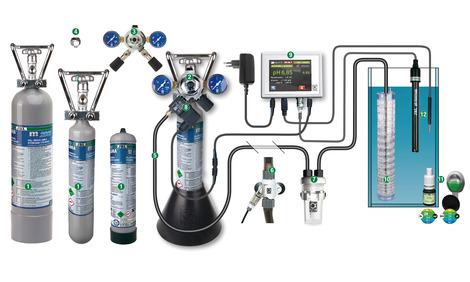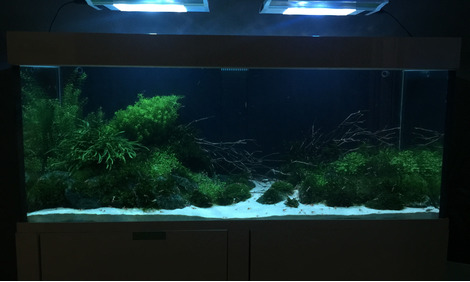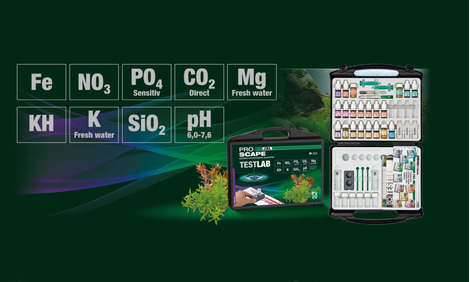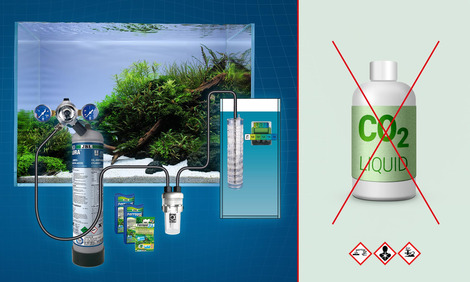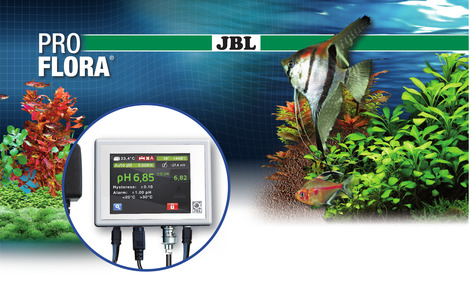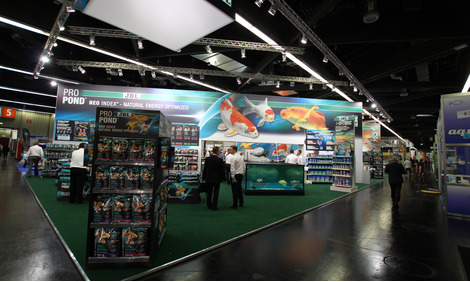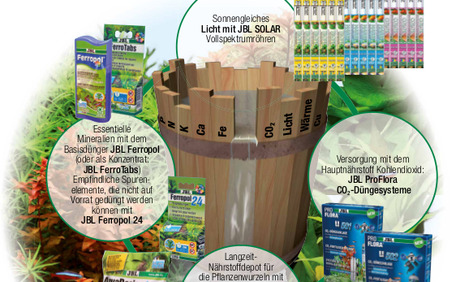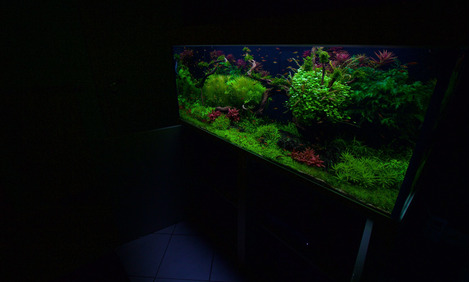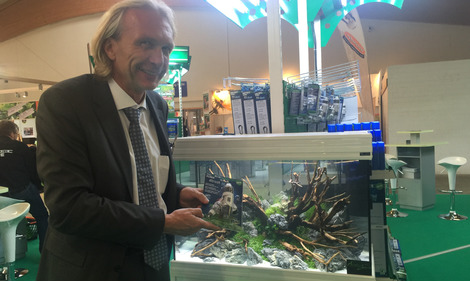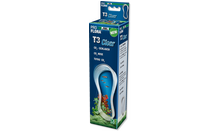Ideal nutrition for plants
The right CO2 concentration in the water is of great importance for the aquarium plants. Carbon dioxide is the main nutrient for plants and promotes their growth. Plants use the CO2 for the photosynthesis and thus supply the water with essential oxygen. They prevent algae growth, remove pollutants, provide hiding places and reduce pathogens.
Even enrichment
The JBL diffuser supplies the aquarium water with the main plant nutrient CO2 in even-sized bubbles.
Easy to install
The diffuser is suitable for all usual CO2 systems. Connect to CO2 hose with 4/6 mm. Attach diffuser with suction holder in the aquarium.
Effective
The built-in special ceramic ensures especially small and even-sized bubbles. Diffuser in high-quality glass design. The correct CO2 amount varies from aquarium to aquarium and depends on the volume, the water movement and the planting of the aquarium. You can check the CO2 content by means of a CO2 test.
JBL PROFLORA Taifun P
Mini CO2 diffuser for nano freshwater aquariums
PROFLORA CO2 TAIFUN GLASS
- Optimal enrichment with main plant nutrient carbon dioxide: CO2 diffuser for small freshwater aquariums from 20 up to 400 l
- Suitable for all common CO2 systems: connect to CO2 hose (4/6 mm), mount diffuser in the aquarium with suction holder
- Even release and effective distribution: special ceramic for very small CO2 bubbles, built-in ceramic diaphragm
- High-quality glass design
- Package contents: mini CO2 diffuser ProFlora Taifun P Nano, incl. 1 suction holder
You may also be interested in
JBL PROFLORA Taifun P
Properties
| Animal species: | Armored catfish, Arowana, Axolotl, Barbels, Bettas, Bichirs/reedfish, Blowfish, Catfish, Cichlids (South America), Clawed frogs, Clawed shrimps, Crayfish, Crustaceans, Danions, Discus, Dwarf crayfish, Dwarf shrimps, Flowerhorn, Gill maggots, Goldfish, Gouramis, Guppy, Juvenile fish, Killifish, Livebearers, Loaches, Mussels, Newts, Panchaxes, Rainbowfish, Snails, Spiny eels, Tetra, Veiltails, blood parrot cichlids, freshwater butterflyfish |
| Animal size: | For all animal sizes |
| Animal age group: | All aquarium fish |
| Volume habitat: | 200-400 L |
| Material: | glass / ceramic |
| Colour: | white / transparent / black |
Electronic label / illuminant
| Mercury: | No |
| Dimmable: | No |
Technical Data
| Height: | 95 mm |
| Length: | 45 mm |
| Width: | 35 mm |
At first the air hoses and special CO2 hoses can easily be pushed on the connection piece. The hoses harden more and more as the months go on and can only be removed from the connection piece using great force. If you pull the hose hard it will only strain the connection, which could, in the worst case, even break off. Instead cut the hoses you want to remove laterally at the ends and carefully remove them. For this it’s always advisable to install hoses with some reserve in its hose length.
In this CO2 diffuser CO2 is pushed through a fine ceramic membrane under high pressure . This can, depending on the pressure, sometimes cause a slight “chirping” noise.
The Taifun P requires pressure for the carbon dioxide to be pressed through the fine membrane. The pressure formed in the reaction flask of JBL bio80 and JBL bio160 is enough to operate the diffuser.
If there are no fine bubbles coming out of the Taifun P, this may be due to the following:
1) The fermentation of the microorganisms isn’t working (see Solutions in the FAQ for the JBL bioRefill).
2) There might be a leak somewhere in the system where pressure can escape. Potential causes of the leak:
2a) The lid of the reaction vessel isn't screwed onto the cylinder properly. Solution: Clean or perhaps replace the sealing ring in the lid.
2b) The connections of the JBL T3 CO₂ hose where it is connected to the cylinder and the JBL SafeStop aren’t fastened tightly. Solution: The hoses must be pushed onto the connections all the way. If used frequently, we recommend shortening the hose by approx. 1 cm.
Over time, algae growth, mulm deposits or occasionally limescale deposits can lead to a clogging of the ceramic diffusion membrane for tiny micro bubbles, with the result that the bubbles get bigger.
In this case please add the JBL Taifun P to JBL PROCLEAN AQUA for several hours.
Gases and fluids always seek the path of least resistance when under pressure. Accordingly, it is normal for a ceramic diffusor not to produce bubbles that are evenly distributed all over the aquarium. The distribution naturally depends on other parameters as well. For example, if the pressure of the carbon dioxide is increased it will result in more uniform bubble production, but more carbon dioxide will be pressed through the TAIFUN as well.
Some of the pores of the ceramic disc can become clogged in the course of time. Please see the other FAQs for more information.
-
Download
safety instruction for accessories
-
Filename:safety_instructions_zubehoer.pdf
-
safety instructions
Reviews
0 Reviews
4 more reviews in other languages
4 Reviews in other languages
Design top, funktioniert perfekt.
Da hätte ich mir gewünscht das dieser Diffusor im m2003 Co2 Düngeanlage erhalten wäre. Weil dieser Taifun M nimmt bissel platz weg und sieht meiner Meinung auch nicht gut aus. Der Diffusor ist zu empfehlen.
klein, unauffällig und sprüht sehr schön CO2
Wer keine Lust auf den großen Flipper im Becken hat, sollte ich mal den Taifun anschauen. Er ist sehr klein, löst das CO2 aber dennoch super auf. Durch das Glas ist er im Aquarium nahezu unsichtbar. Ich kann ihn absolut empfehlen.

